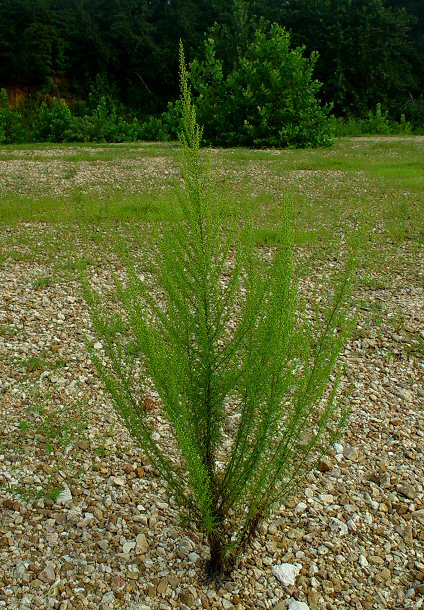Artemisia campestris ssp caudata ta (Michx.) H.M. Hall & Clem.
Western Sagewort

Native
CC = 5
CW = 5
MOC = 7
© DETenaglia
Artemisia campestris ssp caudata ta (Michx.) H.M. Hall & Clem.Western Sagewort | |
 |
Native CC = 5 CW = 5 MOC = 7 |
© DETenaglia |
|
Family - Asteraceae/Anthemideae Habit - Taprooted biennial forb. Stems - Ascending to erect, to 1.2 m, glabrous, minutely glandular.
Leaves - Alternate, 1-16 cm long, the basal and lowermost leaves usually withered by flowering time, long-petiolate, the main leaves mostly short-petiolate. Leaf blades 1-3 times pinnately compound or deeply lobed (uppermost leaves occasionally unlobed), lanceolate to ovate or obovate in outline, the main leaves with 3-7 primary lobes, the ultimate segments or lobes 0.5-1.5 mm wide, narrowly linear, threadlike, mostly sharply pointed at the tip, the margins entire, both surfaces glabrous but minutely glandular at maturity, sometimes sparsely to moderately pubescent with fine, cobwebby hairs when young. Inflorescences - Open, leafy panicles, the branches narrowly racemose with loosely spaced, stalked heads.
Heads - Discoid, with the central florets staminate, only the marginal florets perfect and developing fruits. Involucre 2.5-4.0 mm long, the bracts in 3 or 4 overlapping rows, the main body elliptic-ovate to ovate, glabrous but minutely glandular, with broad, thin, transparent margins and tip, these glabrous. Receptacle naked, without bristly hairs. Ray flowers - Absent. Disk flowers - Numerous, corollas 0.7-1.7 mm long (staminate florets longer than perfect florets), usually greenish yellow, minutely glandular, the 5 lobes without resin canals, persistent, the tube not flattened toward the tip but sometimes slightly oblique at the tip, not becoming swollen at fruiting. Pappus absent.
Fruits - Achenes 0.7-0.9 mm long, narrowly oblong-obovoid, faintly lined, somewhat flattened, reddish brown to brown, shiny. Flowering - July - October. Habitat - Sand and gravel bars along streams, sandstone glades, bluff escarpments. Origin - Native to U.S. Other info. - This weedy looking species can be found in just a handful of Ozark counties. It is much more common in the upper Midwest and Plains states. The plant can get quite large when left untouched and is a biennial or short-lived perennial. This is an easy species to identify in the field because of its clusters of pinnately divided leaves at each node, and its small but numerous flowerheads. At anthesis the entire plant seems covered in flowers. Unfortunately, the pollen is a major cause of hay fever in the fall. Unlike some other wormwoods, this one has little if any aroma. Photographs taken along the shores of the Current River, Shannon County, MO., 8-17-03. |